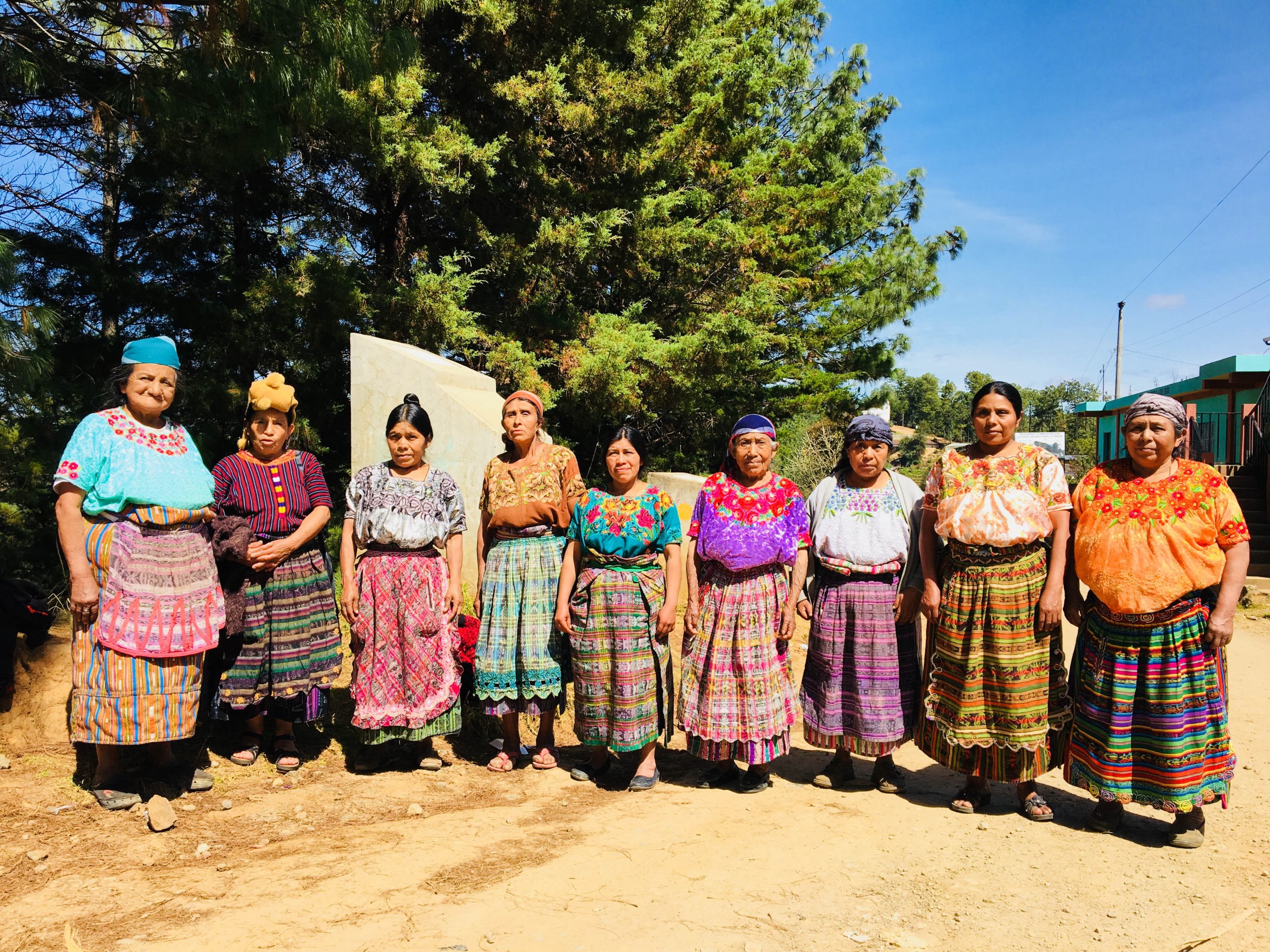
All too often, the way that charities and corporate media portray and report on countries in the so-called Global South can present a somewhat one-dimensional image. While the most sensational aspects of violent conflict, social malaise, disease, disaster and poverty are often highlighted, broader historical, political and cultural context is frequently lacking.
We strongly feel it is important to present a more rounded view of the countries where we work, so we can develop a deeper understanding of the world we all share. As such, in addition to sharing news about our work, we occasionally ask our local teams to tell us more about their home countries.
As well-respected members of the communities we work with in Guatemala, our team there is keen to provide some insight into the country, their communities and our work.
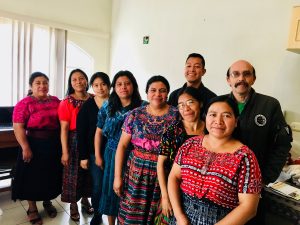
Teresa Fuentes, our National Administrator in Guatemala, tells us: “Guatemala is a very touristic, beautiful country with lots of interesting places to visit and plenty of Indigenous Maya communities [such as K’iche’ and Mam peoples]. People are warm and friendly to visitors, especially when they want to visit places like Tikal [the ruins of an ancient Maya city].”
Olga de León, one of our former K’iche’ Community Facilitators, shares a little more about the country, its people and their history: “Guatemala is known as the ‘Country of Eternal Spring’. Historically, the population belonged to the Maya culture, great astronomers and mathematicians. In the sixteenth century, the Spanish invaded, and stole our country’s wealth. Since then, we have been divided, and the indigenous population discriminated against by the Mestizo (mixed) population.
In the twentieth century, we lived through an internal conflict between the Guatemalan army and revolutionary guerrillas, in which up to 200,000 died, around 90%…at the hands of the army. There was widespread displacement, and many have never returned to their communities.”
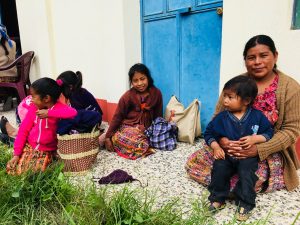
As discussion turns to the specific challenges that Indigenous Maya women face, Rosalinda Zapeta, another former K’iche’ Community Facilitator, explains: “Women are marginalised from the start. Within the home in rural communities, women are raised to wash, cook, clean and marry. A woman pursuing education and a career is considered strange. These same women then face ethnic discrimination in professional settings.”
Silvia Vasquez, our Project Coordinator, agrees: “There are lots of barriers for women; few finish school and even fewer attend university. As a result, women have lower literacy rates, less employment opportunities and are more likely to be economically dependent on men.
The macho culture that dominates within communities means that violence against women is common and family planning is discouraged”.
The team proceeds to outline the many ways that restrictive gender roles impact heavily on the lives of women and girls – from the prevalence of early marriage and pregnancy to discrimination around inheritance of family property.
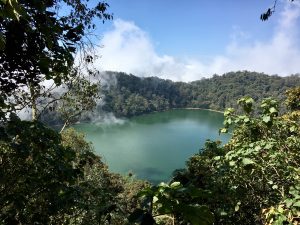
Eventually, the conversation settles on the country’s geography and its significance to people’s livelihoods, with Olga explaining: “Climate depends on region, with lowlands very hot, including jungle, and highlands, where HPA works, very cold. Our communities are in the west of the country, and largely Maya K’iche’ and Maya Mam. The majority are subsistence farmers, with most producing maize and black beans.
Expanding further, Teresa tells us: “The coast is more industrialised, there are more big landowners and higher rainfall. Crops grown include bananas, mango, cacao, pineapple, rubber, coffee, cotton, sesame, cardamom and sugar cane.
Traditionally, people migrate from the highlands to the coast at harvest time, often with their whole families. This is less common now, as coffee and cardamom prices have fallen in recent years.”
Olga continues: “People are very concerned about land, both for a space to live, and to be able to produce food for family consumption, as well as to leave an inheritance for their children. To try and acquire land, many seek to earn cash; but because there are so few work opportunities, many migrate – some to the capital, but many more make the journey to the US.
Those who make it to the US spend at least their first year there paying their debts to the people smugglers…while those who fail to make it across the border end up with large debts and no way to pay them off. The economic situation has contributed to a country with high levels of extortion, kidnappings and crime.”
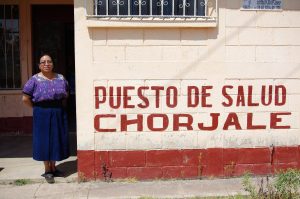
As Silvia explains, these issues are compounded by the prevalence of corruption in public institutions: “Corruption has a major impact on economic opportunities for women. A lot of jobs and contracts, including within the Ministry of Health, are politicised and party supporters are favoured; government jobs, including nurse and teacher roles, are often sold – sometimes by the recruiter and sometimes by the incumbent.
[It] makes delivery of services difficult, despite policies: overpriced equipment and drugs are bought by public bodies, and supplies and opportunities are sold in the medical, food and agricultural sectors.
Security is poor: the police force is corrupt and 96% or murders remain unsolved with little effective enforcement of laws.”
As the team nods in agreement, Rosalinda speaks more on structural challenges: “Domestic violence is a widespread issue – the state has now established some bodies that address domestic violence, but these are often based in regional capitals.
There are few structures and opportunities for political participation for women and Indigenous Maya people. At the community level, mayors and local authorities are only starting to open up to women’s participation.”
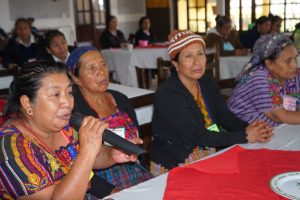
Conversation turns to broader aspects of Guatemalan culture. Consuelo Juárez Pu, our previous Project Coordinator, tells us: “In every town, there’s an annual fair, [dedicated] to the patron saint of each town. There are religious and social activities, and traditional dishes are prepared for the family to share. Schoolchildren parade as well, with their school band, and everyone has the legal right to a public holiday on the main day of their town’s fiesta.
Each town also has its own traditional costume, both a ceremonial and a daily version. This is now only used by women; men having adopted western clothing. Weavers in each town produce their own town’s design.”
While Guatemala is, formally, 55% catholic and 45% protestant, Country Director Tom Hart shares his insights on religion in the country: “Maya spirituality is present in the highlands and is often practised as a syncretic faith alongside Catholicism. It is not often practised as a syncretic faith alongside Protestantism.
Evangelical Protestant churches are spreading quickly and often promoting ‘prosperity theology’. One example of this approach was a suggestion that the size of carrots (after industrial fertilisation) was down to mass evangelical conversion.
Proliferation of small sects has divided communities and families, with families and Indigenous Maya communities losing trust and cohesion due to competition.
This can also impact on healthcare-seeking behaviour. In one case, a pregnant woman who was fasting experienced convulsions. A pastor was called and claimed to have ‘exorcised the demons’ causing the convulsions. The mother was eventually hospitalised; she died, and the baby survived.”
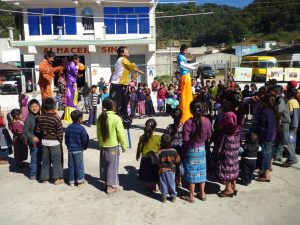
Discussing this incident leads Olga to reflect on the depth of family ties: “Family is also very important to people. Families share good times and bad…triumphs and problems, happiness and sadness alike.
Families also participate in decision-making. In our work, for instance, if a pregnant woman shows a danger sign, the whole family decides whether or not to take her to hospital, or to try and resolve the situation at home. So, family decision-making can be a double-edged sword.”
As the conversation draws to a close, the team is eager to talk about their work and the impact of the initiatives they’ve supported. Consuelo explains: “By working with Ministry of Health staff we’ve been able to ensure that Indigenous Maya people receive respectful, culturally appropriate healthcare.
Together, we’ve improved access to antenatal services for pregnant women and now see them engaging more readily with health facilities. Also, health workers now cooperate with Traditional Birth Attendants from Indigenous Maya communities. Maternal mortality rates are steadily decreasing.”
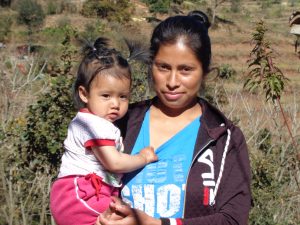
Lastly, Administrative Assistant Clara Ambrocio, adds: “We are truly grateful to all our supporters for helping us undertake this important work.”
Health Poverty Action continues to work with rural communities in the western highlands of the country. Together, we’re finding ways to address critical issues such as maternal and child health, poor nutrition, ethnic discrimination and the marginalisation of women.
Over the coming weeks and months, we will be sharing more about the exciting work we are doing alongside our partners in Guatemala to help build healthier, more prosperous communities.
You can find out more about our work in Guatemala and ways you can support these kind of initiatives here.

